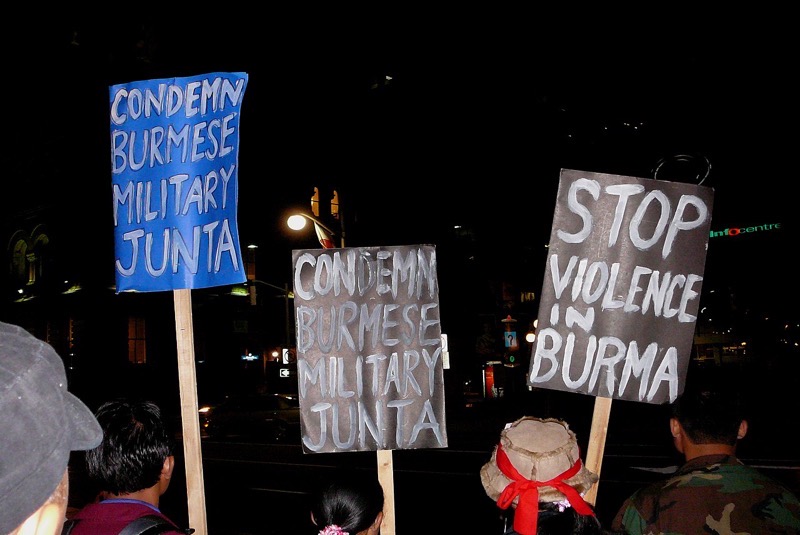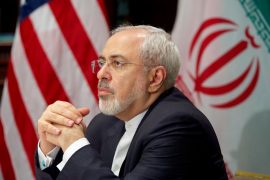In the early days of a brutal 2021 military crackdown on anti-coup protesters in Myanmar, members of the nascent resistance movement began asking “how many dead bodies” it would take for the world community to act.
More than two years on from a coup that installed military rule in the Southeast Asian country, pro-democracy protesters say they have yet to receive an adequate answer.
On April 11, 2023, the country’s armed forces dropped multiple bombs on a gathering in Pazigyi, a village in Sagaing Region, killing around 100 people, it has been estimated, including many children.
Such attacks are not uncommon, if not usually so deadly. The day before the Sagaing massacre, the Myanmar air force dropped bombs in Falam, Chin State, killing 11 people. In fact, since civil war broke out, 3,240 civilians and pro-democracy activists have been killed, according to the human rights group Assistance Association for Political Prisoners. In response, a fierce resistance movement has emerged, with an estimated 65,000 fighters using ambushes and other guerrilla tactics against military targets.
As a scholar on Myanmar’s history, I would argue that the escalating violence can be attributed to two main factors, one internal and one external: a miscalculation by the military over the resistance of Myanmar’s people, and ambivalence from the international community.
From coup to civil war
Myanmar has witnessed killings by the military almost daily since generals seized control of the country in 2021. The coup ended the short period of democratic rule under Nobel Laureate Aung San Suu Kyi’s party, the National League for Democracy.
But there are, I believe, reasons to suggest that the Myanmar military grossly miscalculated the timing of the coup, and underestimated the sentiment of a people unwilling to give up the freedom and prosperity they experienced under democracy.
In this, the military may have been misled by the experience of their counterparts in neighboring Thailand. In 2014, generals in Thailand launched a coup ending months of political instability and promising a process back to democratic rule. That coup was met by sporadic protests, but no unified armed resistance emerged in response.
The Myanmar military similarly promised “free and fair elections” further down the line after its coup.
Unlike in Thailand, people in Myanmar – especially younger generations that came of age in the democratic decade after 2010 – fiercely resisted the army’s takeover and were skeptical of claims that it would restore democracy.
After peaceful protests following the coup were met with live ammunition, pro-democracy activists turned to armed resistance.
In the years since, many young people have undergone military training – often by armed ethnic groups that already existed along the country’s borders – and fought back under the umbrella resistance group, People’s Defense Forces.
Protracted counter-coup activities have humiliated the Myanmar army. The commander in chief, Min Aung Hlaing, recently conceded that two years after the coup, the military was still not in control of swaths of the country. He vowed to intensify a crackdown against people he branded “terrorists.”
The growing instability, Min Aung Hlaing said, meant that promised elections – after which the military was to hand over power to a civilian government – cannot be scheduled.
Uniting around a common enemy
Myanmar’s military leaders have vowed to annihilate resistance groups. Yet there are reasons to believe that the resistance is only getting stronger.
Despite slow initial progress to show a common front, the Bamar majority and minority ethic groups such as Karen, Chin, Kachin, Rakhine and Karenni appear to be unifying against military rule. And resistance fighters have widespread support throughout the country.
A lot will now depend on whether Myanmar soldiers lose the will to fight. Already there are signs of strain. The military is reportedly facing an acute shortage of new recruits, resulting in women being trained to fight in combat. People in the Bamar heartlands, including Sagaing where the April 11 massacre occurred, are refusing to let their sons join the Myanmar army.
In such circumstances, the Myanmar army is increasingly relying on guns and bombs rather than troop numbers.
But the longer the resistance lasts, the more humiliating it will be for a junta that has upped its annual spending on the military to an estimated US$2.7 billion – more than 25% of the national budget – largely to suppress its own population.
Leaving the oil and gas taps running
These internal dynamics have taken place largely in the absence of intense scrutiny from the international community, pro-democracy activists say.
The Ukraine war has seemingly pushed Myanmar down the list of international concerns. It has also exacerbated cracks among the global powers that would, otherwise, likely be on the same page over the worsening situation – prolonged violence and instability in Myanmar is not in any country’s strategic interests, not least China’s or the United States’.
Both the U.S. and the United Nations have made statements in support of democracy in Myanmar, and condemned killings.
But concrete action – which to date has been largely limited to sanctions on individuals and entities – falls well short of what human rights groups have demanded. There has, for example, been no comprehensive global arms embargo despite the use of weapons against civilians. Neither has Myanmar been shut off from foreign currency revenues. And the country is still able to purchase the jet fuel being used by bombers, despite calls for a global ban on such sales to accompany the recent sanctions imposed by some governments, including the U.S.
Moreover, sanctions have yet to bite Myanmar’s energy sector. Activist group Justice for Myanmar has identified 22 oil and gas companies from countries including the U.S. that have continued to provide revenue to Myanmar’s generals during the civil war. Indeed, U.S. oil companies including Chevron lobbied hard against broad sanctions against the Myanmar military.
The failure to shut off oil revenue allows Myanmar’s generals – for whom oil and gas is a major revenue source – to fund the military.
To many within the resistance movement, the reluctance of the international community to exert more pressure on the country’s military looks like global collusion. It also has the potential to prolong the violence by funding the military’s campaign.
Beware the tiger’s tail
A well-known Myanmar phrase warns against the dangers of “catching hold of a tiger’s tail” – once you do so there is no turning back; let go and you will be killed.
It aptly sums up the position now for Myanmar’s military rulers and the resistance fighters being drawn deeper into conflict with each atrocity. They are fighting for the past, present and the future and can’t let go now.
-30-
Copyright©Madras Courier, All Rights Reserved. You may share using our article tools. Please don't cut articles from madrascourier.com and redistribute by email, post to the web, mobile phone or social media.Please send in your feed back and comments to [email protected]











